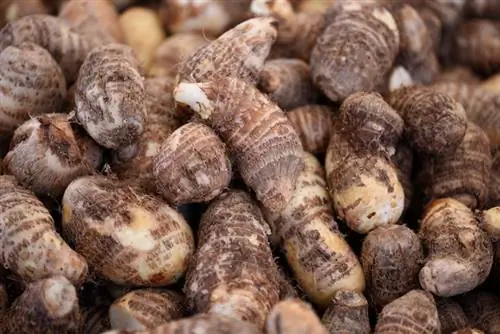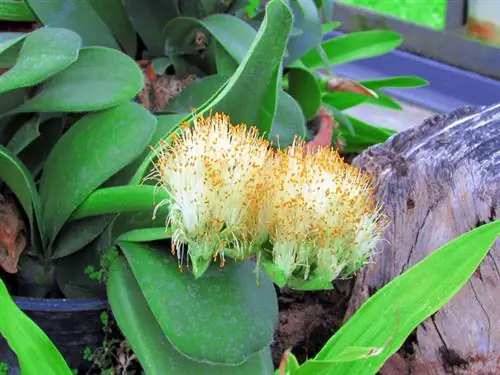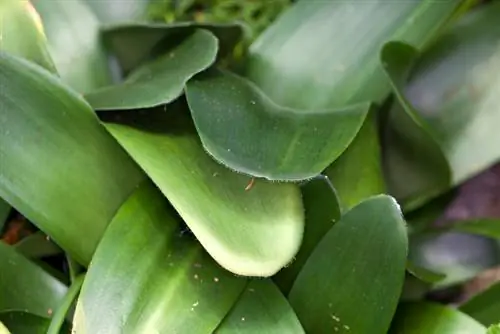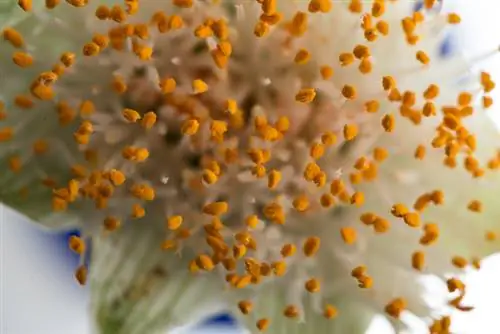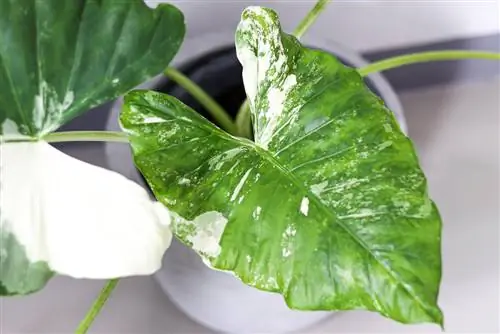- Author admin [email protected].
- Public 2023-12-16 16:46.
- Last modified 2025-01-23 11:21.
There are several plants from different genera called elephant ear. That's why you can't generally say whether "elephant ear" is generally edible or poisonous. For a correct answer you have to use the botanical names.
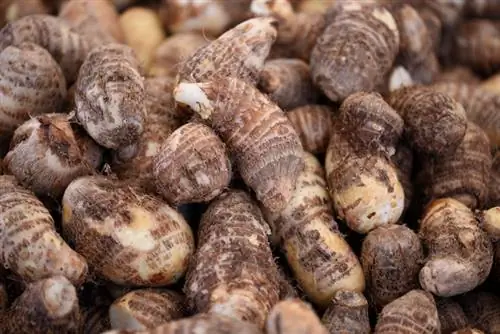
Can you eat the elephant ear tuber?
The tuber of Colocasia esculenta, known as elephant ear, is edible and rich in starch. It can be boiled or fried. Be sure to use the correct plant species for consumption as other elephant ear species can be poisonous.
Colocasia esculenta
The Colocasia esculenta, which belongs to the aroid family, is not only edible but is even a staple food in its Asian homeland. Similar to potatoes, the tuber of Colocasia esculenta contains a lot of starch. It can be boiled or fried.
Xanthosoma sagiitifolium
The Xanthosoma sagiitifolium, also an arum plant, grows in Suriname. The arrow-shaped or egg-shaped leaves of this vegetable plant reach a length of up to 60 cm. In Suriname they are prepared similarly to spinach.
Kalanchoe beharensis
Kalanchoe beharensis, which belongs to the thick-leaved family, is not a useful plant. It is considered poisonous to all types of pets. They are slightly poisonous to humans. Ideally, it should be positioned so that neither small children nor pets can reach it.
Haemanthus albiflos
The elephant ear Haemanthus albiflos belongs to the amaryllis family and is a very rare houseplant. Therefore, little is found about whether this plant is poisonous or not. However, the amaryllis, which is related to this elephant ear, is poisonous. It has an irritating effect on the skin and mucous membranes.
This easy-care elephant ear originally comes from South Africa. There it grows in clump-like groups. In our latitudes the elephant's ear is not hardy, but is welcome to stand outside on the balcony or terrace in summer.
For easy propagation, it is best to use the small daughter bulbs that form on the tuber. If these onions are carefully separated from the mother onion and placed individually in pots, they will soon develop into strong elephant ears.
The most important things in brief:
- clarify which elephant ear you have
- Colocasia esculenta: fry or boil the tuber
- Xanthosoma sagiitifolium: prepare leaves like spinach
- Kalanchoe beharensis: poisonous to pets
- Haemanthus albiflos: non-toxic or slightly toxic, possibly irritating to skin and mucous membranes
Tip
Before using parts of your elephant ear in the kitchen, be sure to clarify what type of plant it is.

